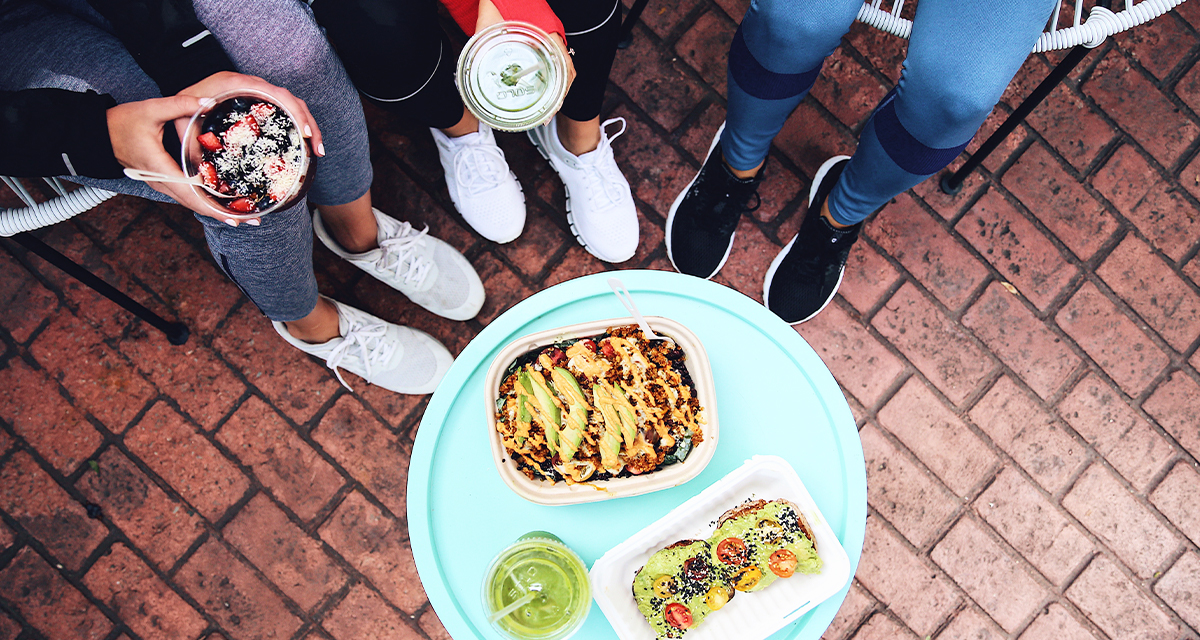Running a marathon is no small feat, and proper training and preparation are vital. Most runners realize that a good training program includes running-specific workouts to improve your endurance, speed, and strength. But once the running shoes are off, what else can you do to prepare?
The answer: fuel. This is the most commonly overlooked area of training, but it’s one of the most important.
Why fueling matters
Your body has a limited supply of energy. If you keep running long enough, eventually you will run out. In fact, running for longer than 60 minutes without taking in more energy will limit your ability to run at your full potential.
But wait. That’s why there are water and fuel stations in the marathons. Take in some Gatorade, water, and maybe one of those gel things, and just keep running. Right?
Unfortunately, if marathon fueling was that simple, there would be no runners hitting the wall. And that’s simply not the case. Matt Fitzgerald, in his book The New Rules of Marathon and Half Marathon Nutrition, states that three out of four participants “hit the wall.” Novice runners, professional runners, men, women—no runner is immune.
Hitting the wall is not caused solely by improper fueling. Lack of fitness and poor pacing are also causes. Most runners, however, practice their pacing and ramp up their fitness progressively in training.
Knowledge and practice around fueling, on the other hand, is not as widespread. Many runners, not unlike most people, do not prioritize nutrition—especially fueling during a race.
In order to run to your full potential, fueling must be taken as seriously as your running.
Why runners need to practice proper fueling
Taking in fuel while running is not natural or easy for humans. Taking in fuel requires practice and training your gut.
Current research suggests that a marathon runner should aim to consume 60 grams of carbohydrates (either in a liquid, gel or chew) per hour. While this amount of carbohydrate is fine for some, many runners will struggle to take in this many carbs. I recommend starting at 30 grams of carbs per hour to start and working up from there. Because taking in too much fuel can cause nausea, bloating and sloshing in your stomach, it’s vital to practice your fueling well in advance of your marathon. This will help you find the amount, rate and type of fuel that works for you.
How to practice race fueling: race simulation
While it’s not necessary to practice your fueling in every run, you should use two or three long runs (at or near race pace) to develop your marathon fueling plan. In these race simulation training runs, be sure to use the same fuel and consume the fuel at the same rate as you will for your marathon. You may need to wear a fuel belt during your training and most likely on race day. Remember that if it will be much warmer on race day than in your simulations, you may need to account for even more fluid loss and subsequent intake.
You’ll also want to research exactly where in the race the fluid stations are. If there are fluid stations at mile 3, 6 and 10 for example, then fuel at the same intervals during your race simulations.
To get a bit more technical, you could even practice grabbing a drink from someone, just like you would at a race fuel station. Set up a small table outside your house and do a 3-4 mile loop that brings you back to your house. Have a friend or family member hand you water and/or sports drinks and practice drinking during your run. I do recommend slowing a bit or even walking for a few seconds to make it easier to take in the fluid.
If you want to run your best marathon possible, get out there and train hard. Remember though, running lots of miles in training will not guarantee success. You must prioritize race fueling just as much–and practice makes perfect.
Looking for a race training plan? The ASICS Runkeeper app has plans tailored to help you meet your goals.




